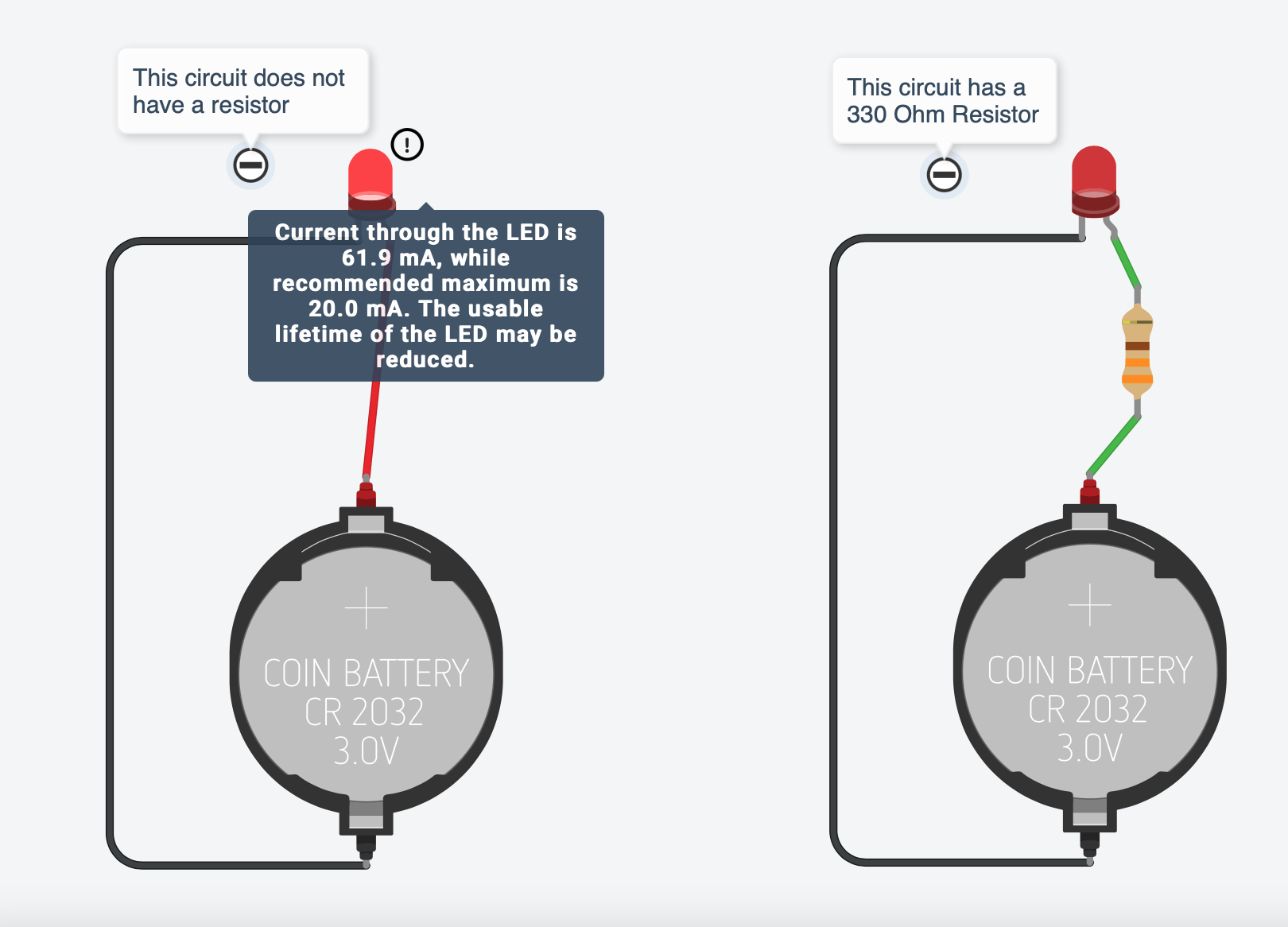Essential Theory
In this tutorial, we will learn the basics of electronic circuits, Ohm's Law, and a guide to the components provided in the SSTuino Innovator's Kit v2.
Tip: As we will be progressing towards tinkering and creating a circuit, please do not connect the circuit/project to power before completing it. This helps to lower the risk of a component failure due to an improperly constructed circuit. 🙂
How do circuits work?
A basic electrical circuit has 3 items:
- Power Source (Battery, Wall Plug, etc.)
- Wires/Conductors
- Consumer (e.g. Light bulb, Speaker, Servo, etc.)
The power source provides the electrical energy required by the consumer by travelling through the wires. For example, the battery in this circuit provides energy to the LED.
To prevent too much energy from travelling through the circuit to the consumer, we "limit" it by using resistors. Introducing Ohm's Law.
Ohm's Law
In a basic circuit, there are 3 variables to consider:
- Voltage
- Current
- Resistance
Voltage is the potential difference measured across the component. For example, the potential difference measured across a typical AA battery is 1.5V. The unit for voltage is V.
Current is the rate at which the electricity flows throughout the circuit and is measured in Amperes. The unit for current is A.
The resistance resists the flow of electricity, to prevent the consumer from being damaged due to too much current flowing through it. The unit for resistance is Ω.
Here are 2 examples, the one with a resistor to the right, the one without on the left.

Although the LED on the left is glowing much brighter than the one on the right, its lifespan is significantly reduced due to the excessive current flowing through the LED. If batteries with more voltage were used (e.g. 9-Volt Battery), it would probably cause the LED to be permanently damaged immediately.
To keep it simple for learning, we have 2 main resistors (330Ω and 10KΩ) provided in the SSTuino Innovator's Kit v2 that would be just nice for the included components.
Below is a simple example of a circuit with a resistor.

